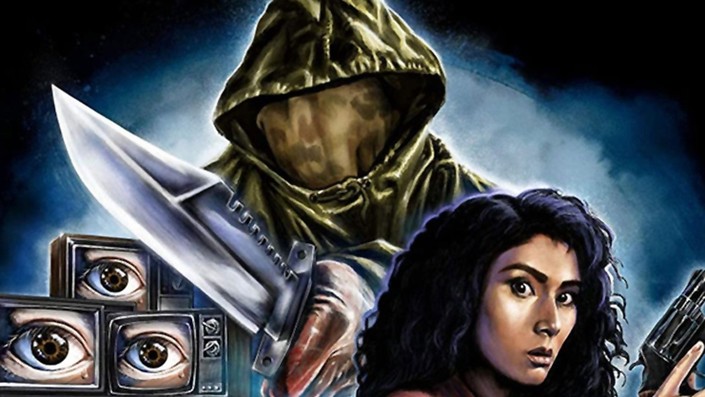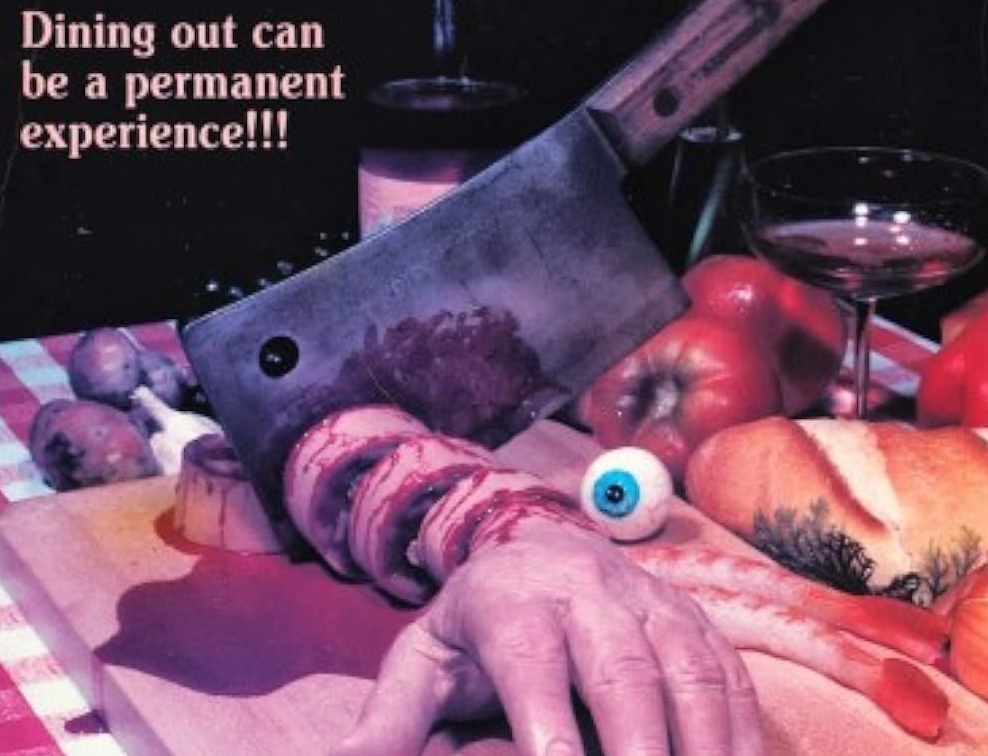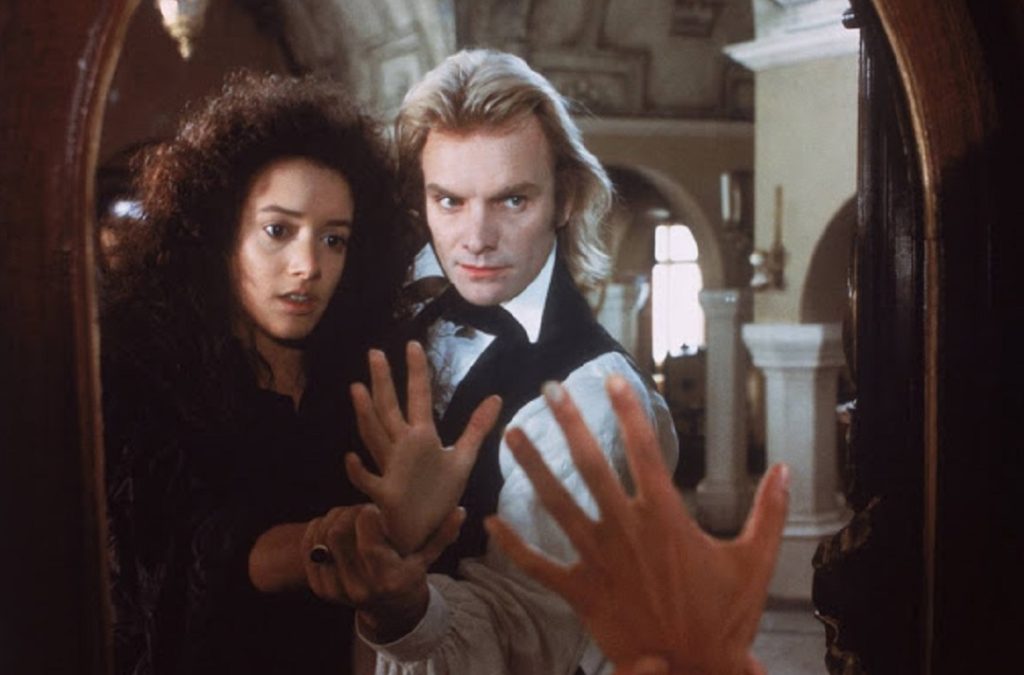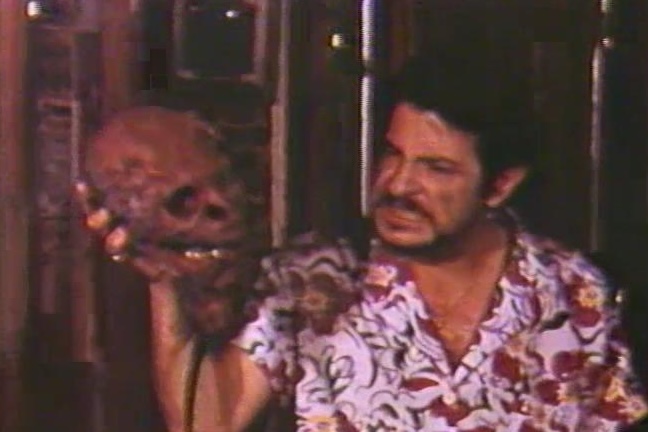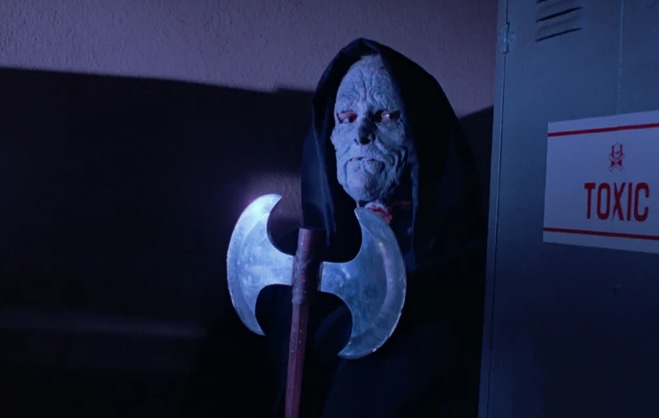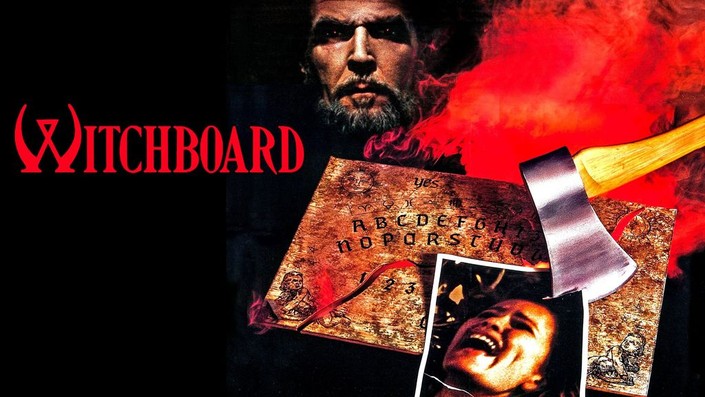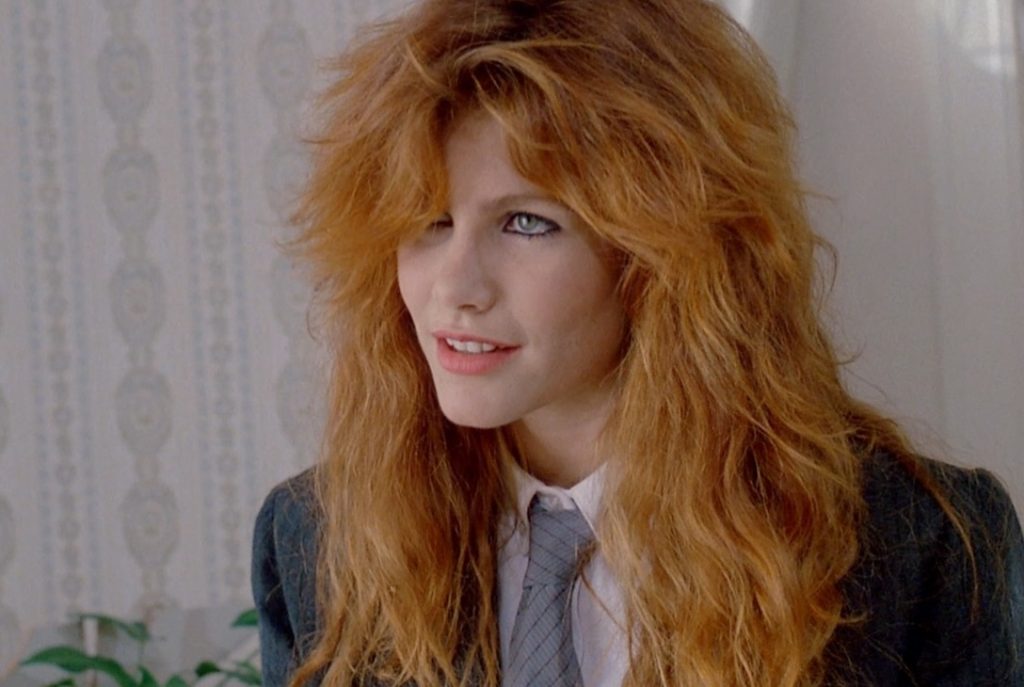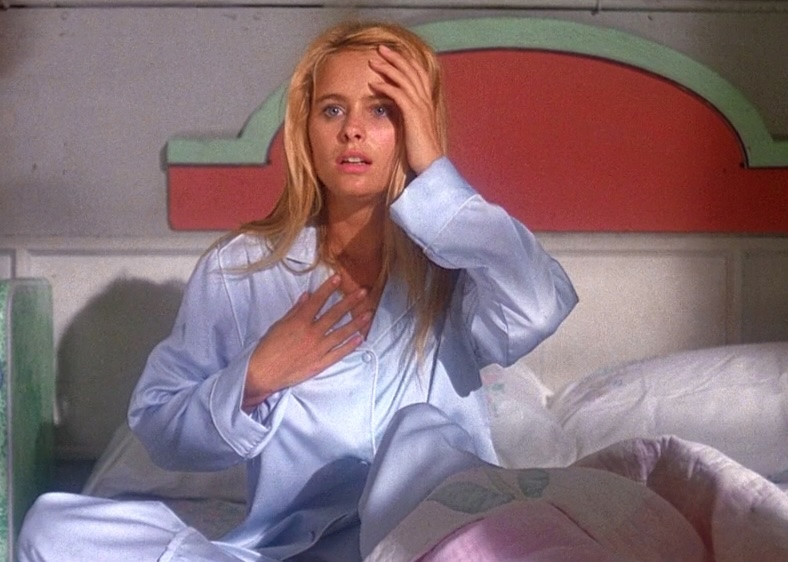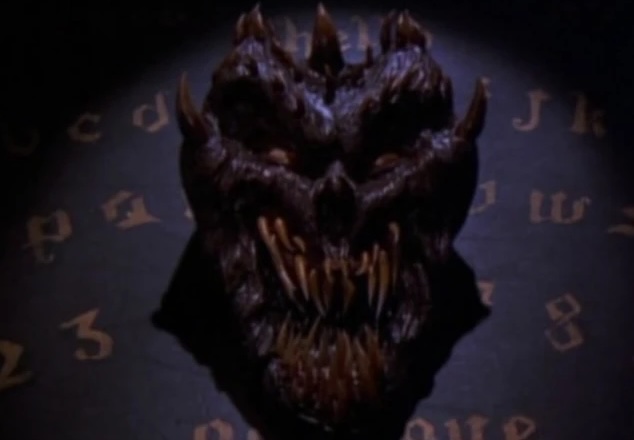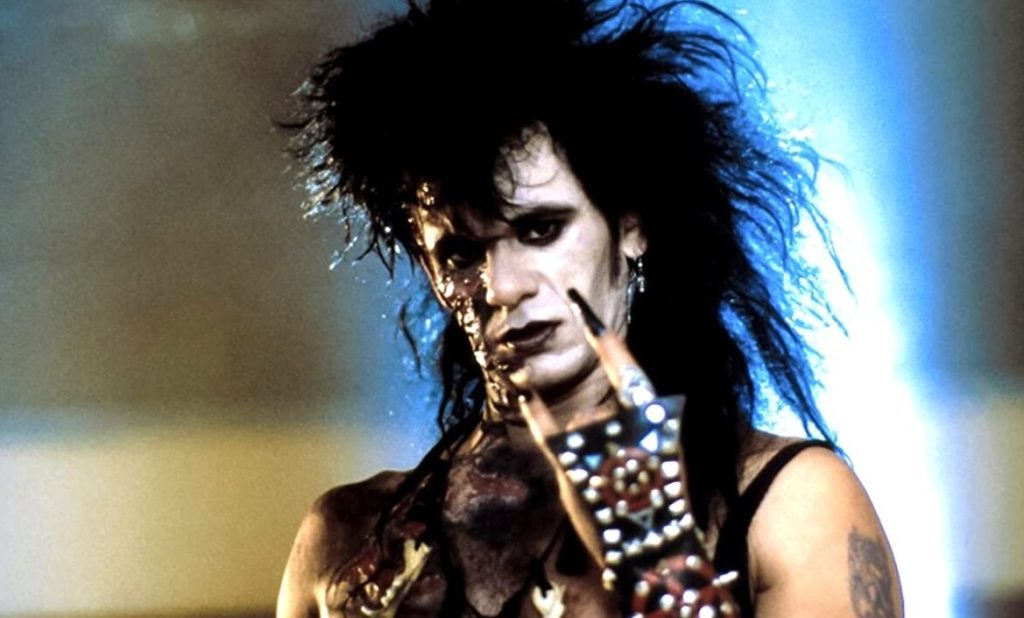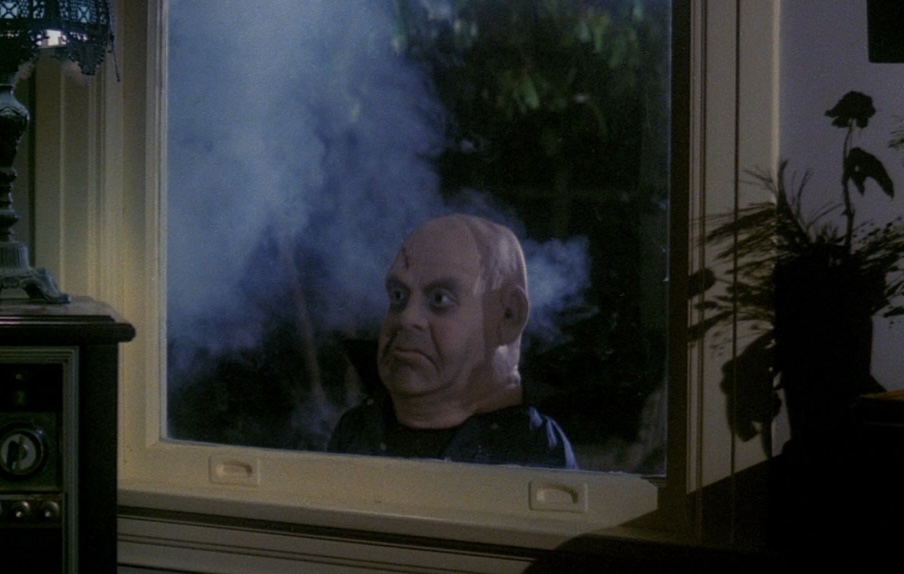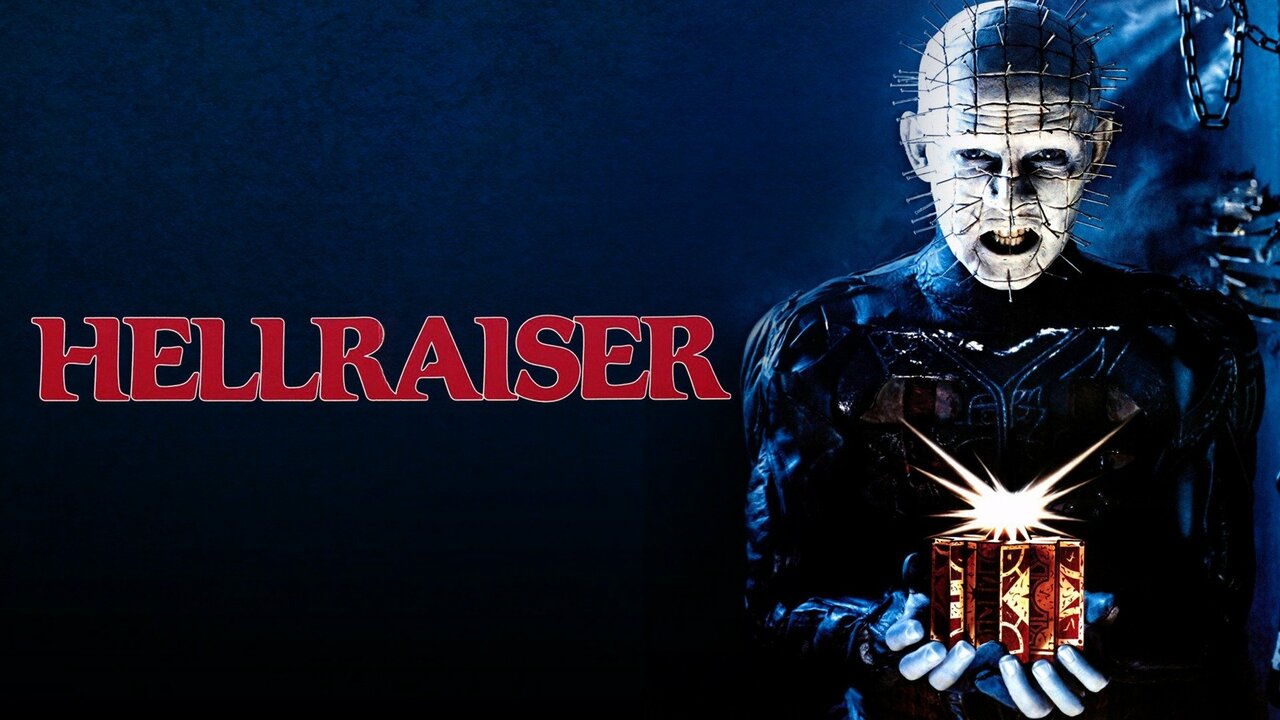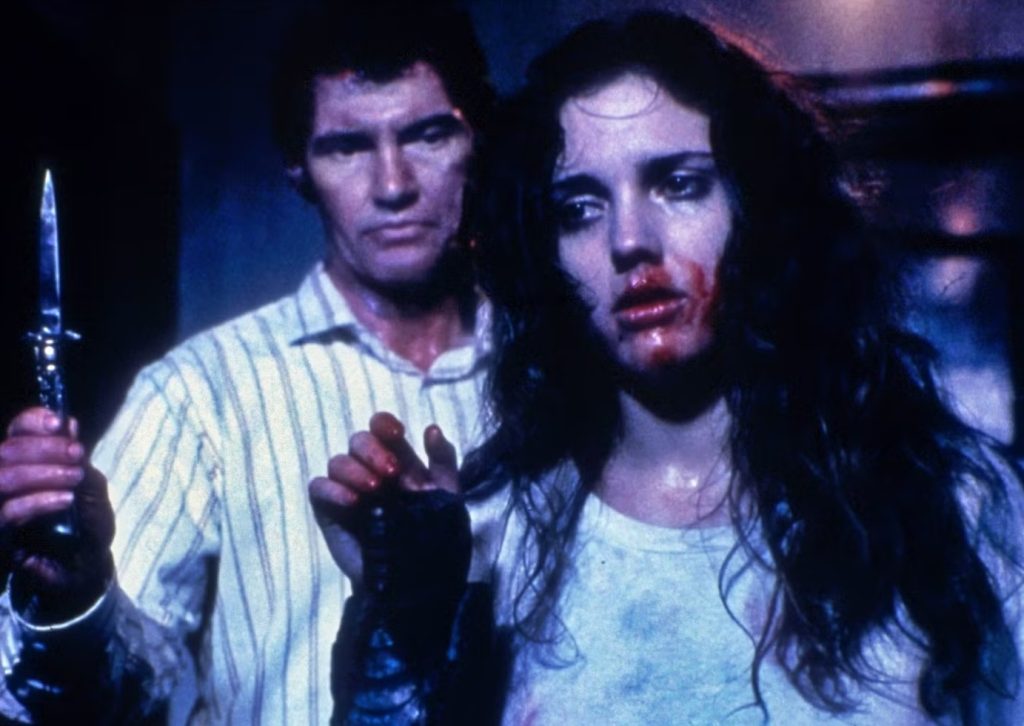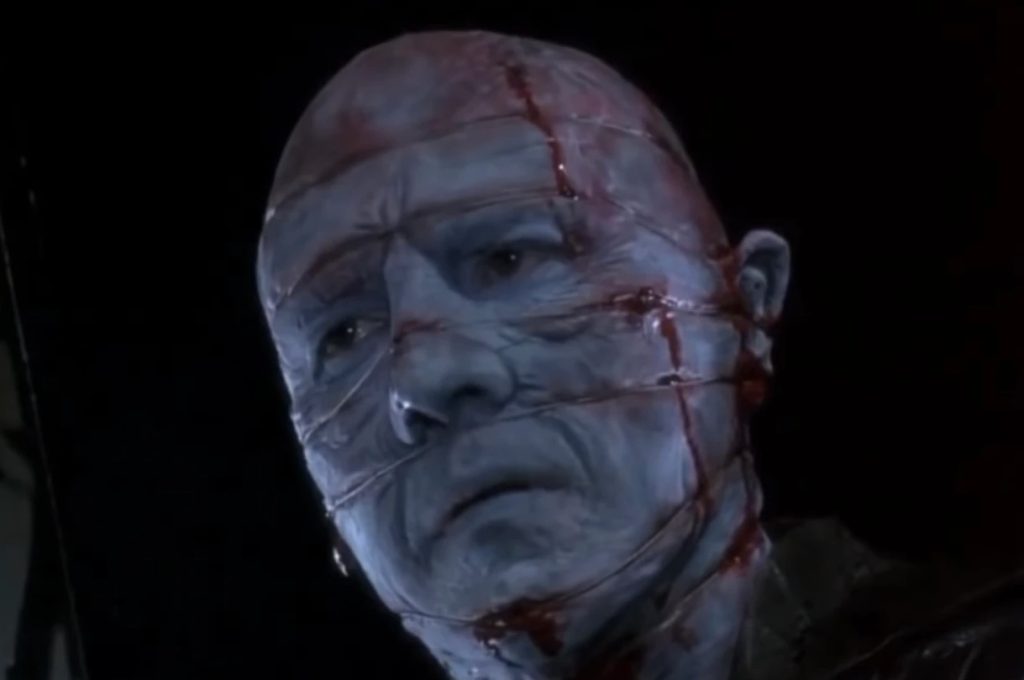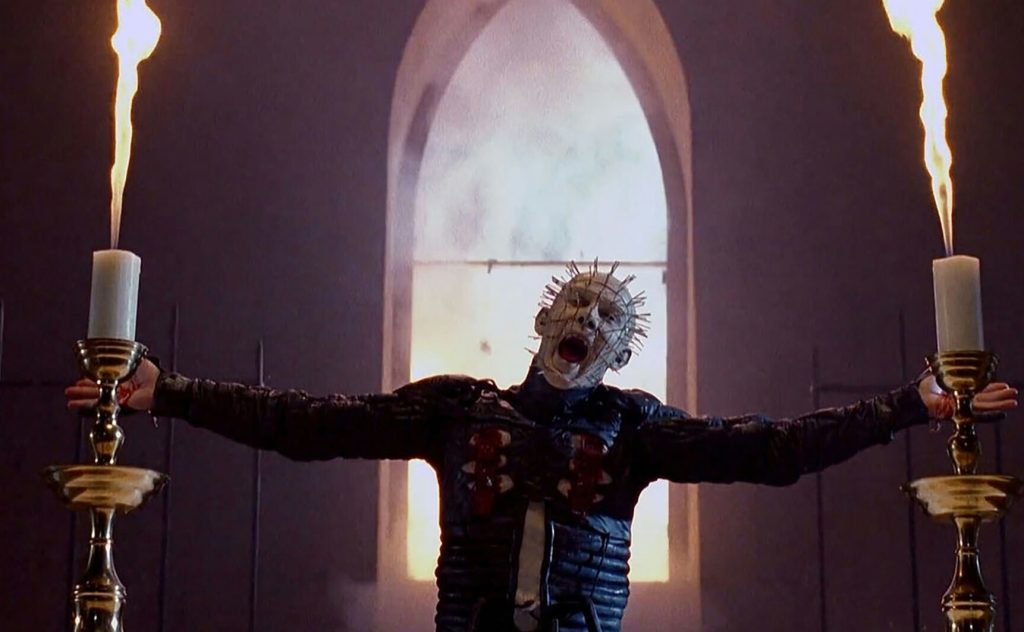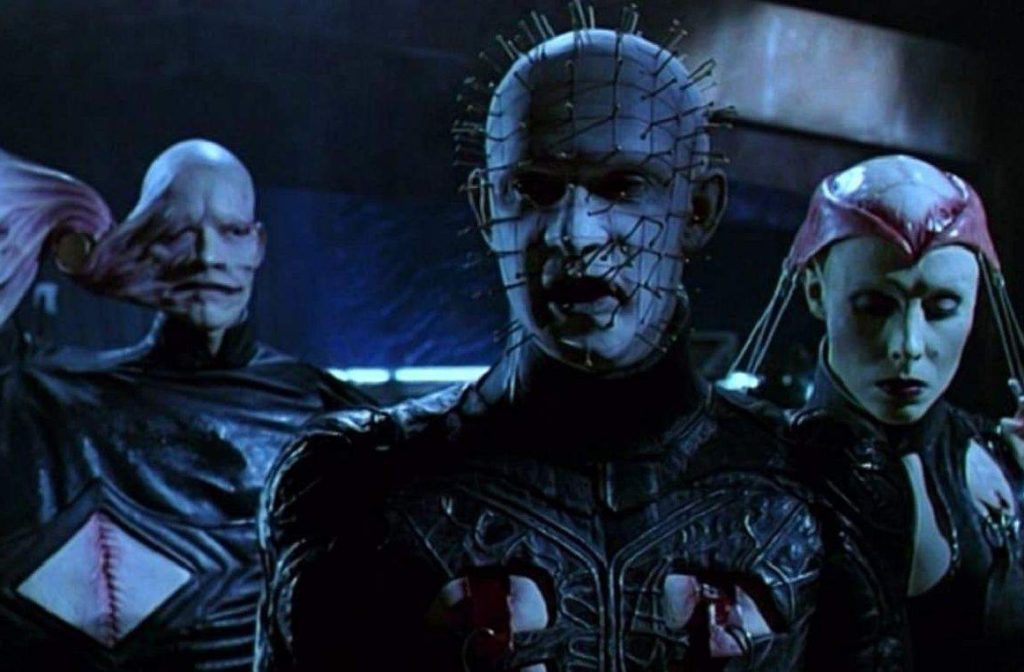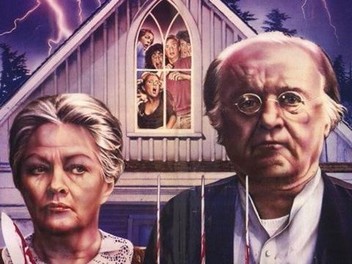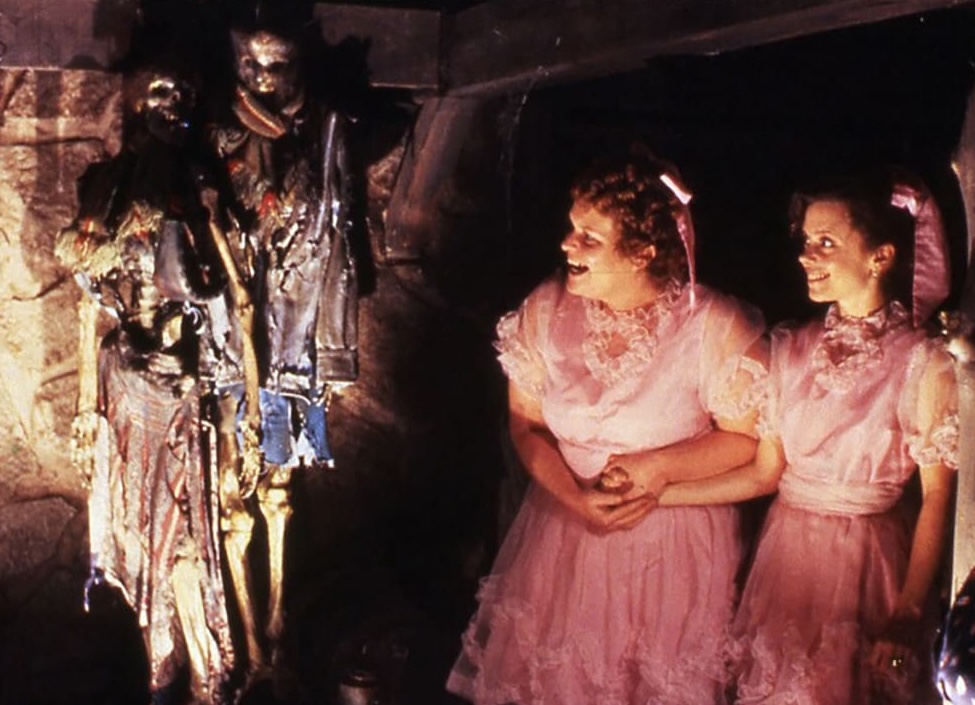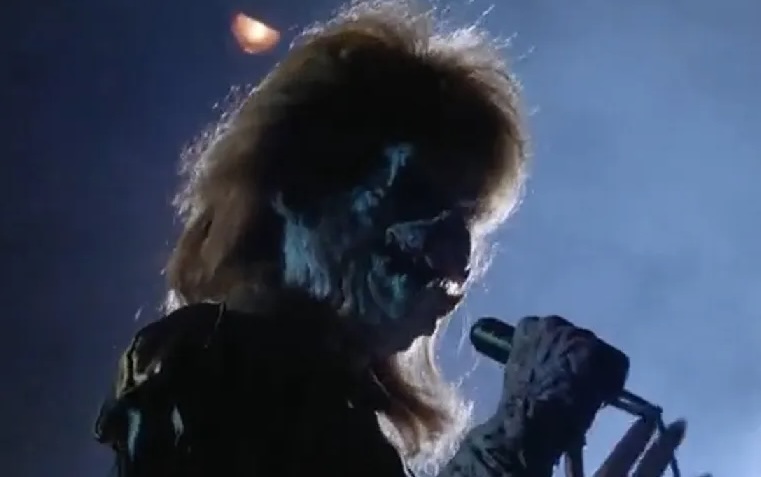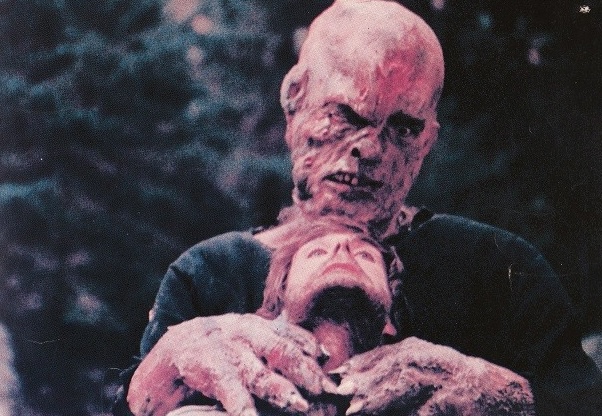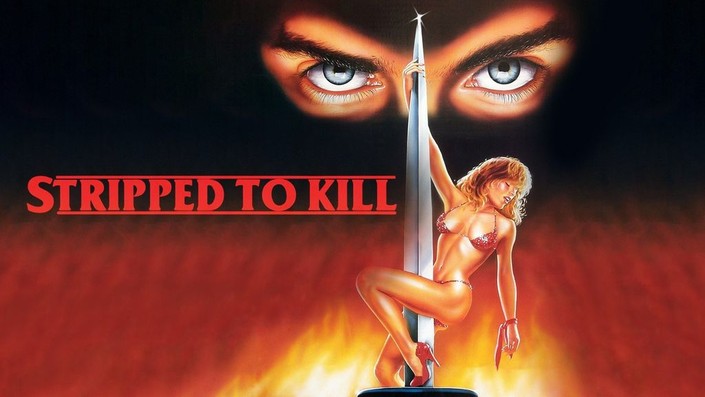Beyond Evil – 1980, US, 93m. Director: Herb Freed.
Evil Dead Trap – 1988, Japan, 102m. Director: Toshiharu Ikeda.
Wolfman – 1979, US, 101m. Director: Worth Keeter.
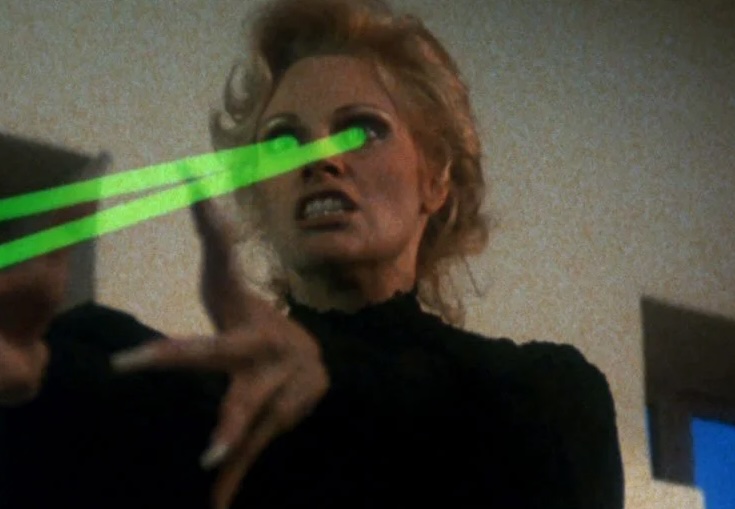
BEYOND EVIL (1980) A couple moves into a large house haunted by the malevolent spirit of a Devil worshipper who’s still scorned by her untimely death at the hands of her philandering husband. The ghost, Alma (who looks exactly like Angelique from the TV show, Dark Shadows), slowly possesses the wife, Barbara (Lynda Day George), by turning her into an emotional train wreck and confusing her husband, Larry (John Saxon)—as if the ghostly brand on Barbara’s body wasn’t a clear indication of demonic activity. A sleazy doctor tries to pull the wool over Barbara’s eyes but ends up dying a fiery death at the hands of Alma/Barbara. Larry throws his old school sensibilities out the window and brings in a faith healer to put a stop to Alma/Barbara’s murderous mayhem. The special effects are in bargain basement territory, which isn’t all that surprising considering Beyond Evil has an inherently low-rent feel from the very first scene. Better than the similar Mausoleum (1983), but still not very good. C
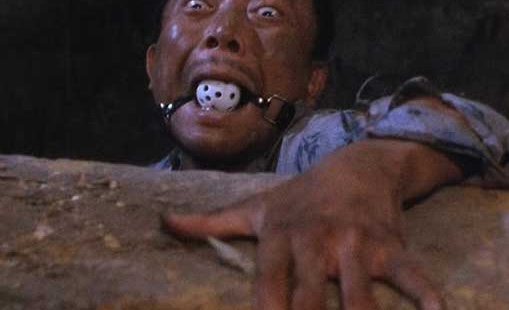
EVIL DEAD TRAP (1988) A Japanese television team investigating an alleged snuff video depicting a woman’s murder gets roped into the bloody games of a demented madman. The TV crew is lured to an abandoned military facility where they’re tormented by a hooded killer and his expertise of trapping people in elaborate torture devices—one victim is skewered with several metal spears after stumbling upon the decaying body of the woman from the snuff movie. After most of the cast is dispatched (with a couple of rapes thrown in for good measure), it’s revealed that the hooded figure is just a puppet orchestrated by the man’s Cronenbergesque, telekinetic fetal twin that rips out of the man’s body at the end—just like Samantha Eggar in The Brood. Don’t worry, I didn’t get it either. Evil Dead Trap is an inventive and gruesome tribute (in tone and style) to the films of Dario Argento and recommended for viewing—at least up until the ludicrous final 10 minutes. B–
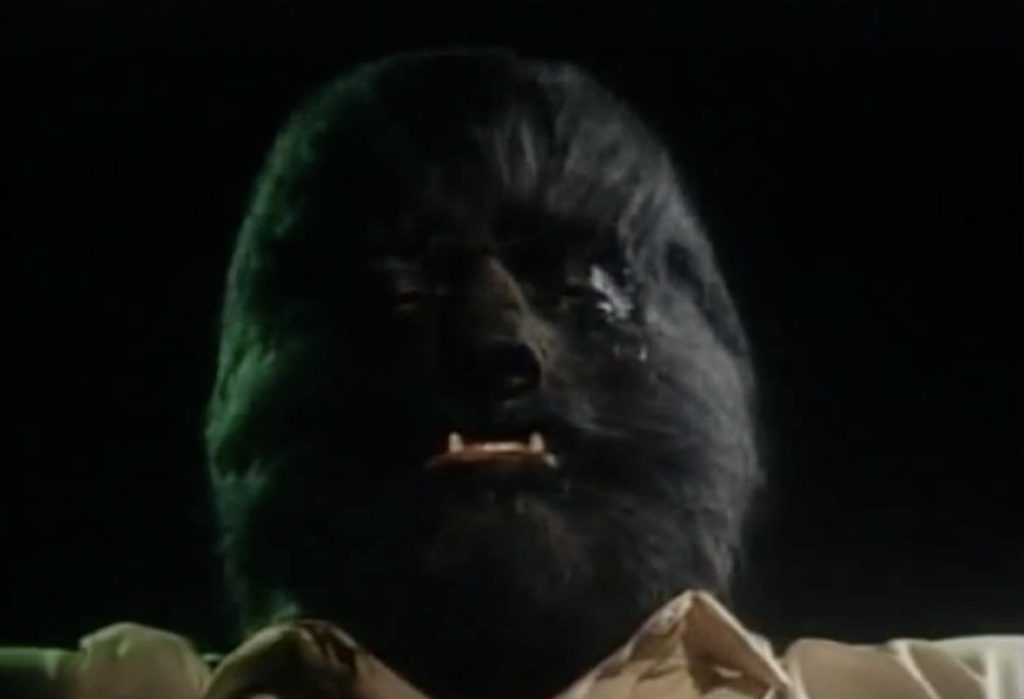
WOLFMAN (1979) There’s plenty of Southern color to Wolfman, a tale of a turn-of-the-century family plagued by a history of lycanthropy. Unfortunately, this melodramatic feature from prolific North Carolina producer Earl Owensby comes off as more of a watered down episode of Dark Shadows than a full-fledged werewolf film—the same problem that made Owensby’s A Day of Judgement (1981) such a missed opportunity. Owensby not only financed Wolfman but stars as Colin Glasgow, inheritor of the Glasgow family estate, and his late father’s curse of werewolfism. At first Colin doesn’t believe in the stories, but come the next full moon—and an hour into the film!—Colin sprouts fur, fangs, and goes on a killing spree. Some will appreciate Wolfman‘s use of old fashioned optical effects during the transformation scenes, reminiscent of Lon Chaney Jr. in The Wolf Man. Modern audiences raised on An American Werewolf in London and The Howling are more likely to yawn from the slow pacing and lack of general excitement. D+

